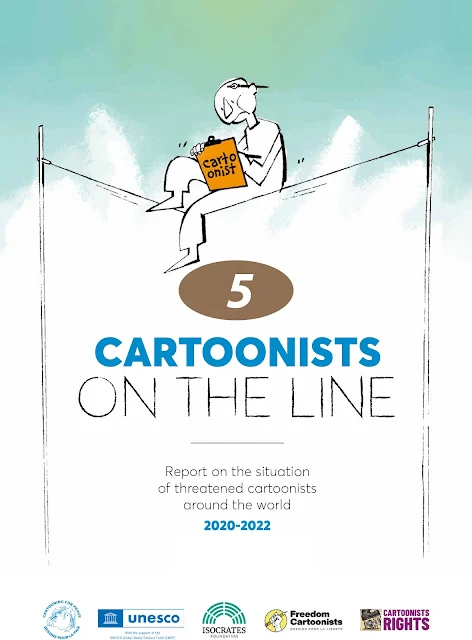"They don’t want to exhibit my work, because once they do, they will be accused as racist by the Chinese government—a common tactic deployed by China to discredit criticism of its policies and practices. It’s very tricky. And it’s working on people, because people do not want to take the risk. I tried publicly funded institutions, museums, private galleries—there is just no way to do that. And it’s really hurting me that I cannot showcase my art, that I cannot earn fairly as an artist by having a gallery representing me and selling my works in Australia." Badiucao (China/Australia)28
Regional focus
Asia
John A. Lent, Founding Publisher/ Editor-in-Chief, International Journal of Comic Art , and author of Asian Political Cartoons
Asia is not known as a beacon of freedom of the press, and, by extension, the “freedom to cartoon.” While the main culprit denying free cartooning has remained the same – i.e., national governments – control tactics have changed, becoming more indirect and insidious.
Worst of these phenomena, and very common throughout Asia, is self-censorship by cartoonists and their editors. Further, Asian cartooning is plagued with “guided cartooning,” where cartoonists are coerced by authorities to align with them for the betterment of the country, Singapore being an example; media conglomeratisation,
where cartoonists avoid targeting the multiple interests of the mega-corporation that owns their outlet, prevalent in South Korea, the Philippines, Singapore, Malaysia, and India; and collaborative cartooning, where the subject and slant of cartoons are determined in daily editorial board meetings, with publishers and editors present. Also, cartoonists’ numbers have dwindled drastically, exemplified by Japan, where only Mainichi Shimbun of Tokyo’s three huge circulation dailies still retains a staff cartoonist. Fifty major Japanese dailies are supplied cartoons from Kyodo Illustration, a cooperative made up of only eight cartoonists.
Other often-used control mechanisms practiced by Asian authorities are: purposely vague and ever-changing “red lines” not to be crossed, keeping cartoonists cautious; maintaining national ideologies that stipulate common values, such as the Rukunegara of Malaysia, Pancasila of Indonesia, and Communism in China, North Korea, and Vietnam; misusing legislation, such as Zunar’s29 multiple charges under colonial-era sedition law in Malaysia, or declaring martial law, most recently in Myanmar. In China, North Korea, Vietnam, Myanmar, and Singapore, political cartoons are banned.
Punishments meted out to cartoonists have been severe: threatened with rape and death in India; allegedly tortured in Bangladesh; exiled from China; or fired or suspended in Hong Kong. The loss of Zunzi30 after a forty-year run in the Ming Pao newspaper illustrates this discouraging trend.



